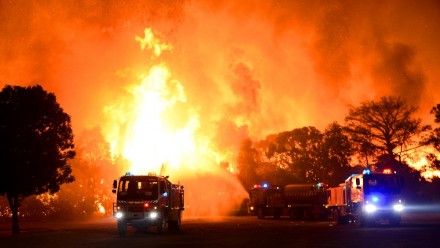Can drones help prevent catastrophic bushfires?
Australia is experiencing unprecedented, extreme bushfire conditions all around the country, linked to prolonged drought, soaring temperatures and strong winds. The results have been catastrophic, resulting in loss of life and massive ecological, economic, health and social costs.
We need to change the way we fight bushfires. ANU has developed a novel approach that harnesses modern technologies and that is successful in reducing the risk of large-scale bushfires under extreme conditions.
In December 2021, the ANU-Optus Bushfire Research Centre of Excellence in collaboration with the ACT Rural Fire Service (RFS), launched a partnership with drone manufacturer, Carbonix. The Australian-owned company will provide ANU and ACT RFS with autonomous scout drones to assist with research into effective methods of early detection of bushfire ignitions.
Carbonix drones are renowned for their long endurance capability, with the most advanced drones capable of flying for up to 10 hours at a time.
The project targets the development of drone technology to provide early validation of lightning strike ignitions in deep bushland, which are responsible for the majority of catastrophic bushfires.
“Lightning strikes cause fires in areas where it is difficult to get resources in to contain the fire before it has grown to catastrophic proportions,” said Professor Robert Mahony, a lead researcher within the ANU-Optus Research Centre.
“We identified the importance of drone surveillance in addressing catastrophic bushfires in Australia and have built a research program to develop and evaluate the technology and its capabilities.”
A dry lightning storm in summer can produce thousands of lightning strikes, of which only a few may cause ignition.
“By having a drone assess a lightning strike point and validate ignition or otherwise, this will allow targeting of aerial suppression to contain or even extinguish ignitions before they can grow,” said Professor Mahoney.
Renowned computer scientist, Dr Andrew Tridgell, is working on programming the drones. He says that the effects of climate change have meant that prevention is the only viable approach to tackling the threat of bushfires.
“By working with governments, fire services, and companies like Carbonix, we are taking a leading role in championing appropriate new technology that can provide a way forward for Australia in managing bushfires into the 21st century,” he said.
Key elements of the first phase of the drone project include testing of the communication network, telemetry distance and camera resolution, with results expected in late 2022.











